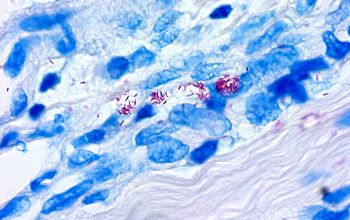World Leprosy Day: "Eradicating the Stigma and promoting the dignity of people affected by the disease."
- Rianna Samsingh

- Jan 28, 2024
- 4 min read
Updated: Jun 10, 2024
Hansen's disease, also known as leprosy, is an infection caused by slow-growing bacteria called Mycobacterium leprae. It can affect the nerves, skin, eyes, and lining of the nose. With early diagnosis and treatment, the disease can be cured. However, if left untreated, the nerve damage can result in crippling of hands and feet, paralysis, and blindness.

Ever since the disease first made an appearance (from 600 BC-1400 BC), Leprosy has been surrounded by misunderstanding, fear and societal stigma. In Western Europe, it reached its peak during the Middle Ages, at a time when the disease was viewed as rendering the infected person "unclean” and nobody was truly sure of how it was contracted. The stigma of the disease later renewed itself among Europeans in the Imperial Era when they found it
was , "hyper epidemic in regions that were being colonised." It then became associated with poor, developing countries, whose residents were believed by Europeans to be inferior in most ways. People with leprosy faced severe social prejudice, often enduring isolation, exclusion, and abandonment. Labelled as outcasts, they were subjected to discrimination, forced segregation in leper colonies, and harsh treatment due to deep-rooted cultural
and religious misconceptions about the disease.
The biggest fear revolving around the illness stems from the ghastly appearances sported by infected individuals. With skin lesions, nodules, disfigurement, pale or reddish patches and, in advanced cases, deformities such as clawed hands or facial changes, all of which contribute to the misconceptions about leprosy’s contagious nature.
Even in modern times, the stigma surrounding leprosy persists mainly due to the spread of misinformation caused by fear and disgust. Globally, healthcare, quality of living and resistance to disease have evolved drastically compared to when leprosy first appeared and there has been significant progress in medical advancements and treatment options. Currently, more than 95% of all people have natural immunity to the disease.
Though it has been scientifically proven that Leprosy cannot be easily transferred from person to person and that prolonged close contact with an infected individual is needed in order to contract the disease, the stigma is still rampant. Furthermore, once infected individuals are treated with prescribed antibiotic medication, the disease can be cured.
So How Can We Dispel the Stigma Caused by Leprosy?
One of the primary challenges in combating leprosy stigma lies in dispelling
the myths that surround the disease. Education plays a pivotal role in
enlightening the public about the true nature of leprosy, its causes,
transmission, and the availability of effective treatments. Awareness
campaigns can be designed to reach diverse audiences, utilising various
media platforms to disseminate accurate information and dispel the
stereotypes associated with leprosy.
Personal narratives and testimonials from individuals who have experienced
leprosy can be powerful tools in humanising the disease and challenging
prevailing stereotypes. Sharing stories of resilience, recovery, and successful
reintegration into society can help break down the prejudice. These narratives
provide a human face to the disease, creating empathy and understanding
among the general population.
Healthcare professionals also play a crucial role in eradicating leprosy stigma.
By receiving specialised training on how to approach and interact with patients
with leprosy, medical practitioners can contribute to creating a supportive and
non-discriminatory healthcare environment.
Government initiatives and policies are instrumental in dismantling systemic
barriers that contribute to leprosy stigma. Legal frameworks that protect the
rights of individuals with leprosy and prohibit discrimination in various aspects
of life, including employment and education, are essential. Additionally,
governments should allocate resources to support rehabilitation programs and
social integration efforts for those affected by leprosy.
The media also plays an incredibly important role in shaping public opinion
and responsible journalism can significantly impact the narrative surrounding
leprosy. Journalists should strive to provide accurate information, challenge
stereotypes, and highlight success stories of individuals overcoming leprosy.
Sensitising the media to the social impact of their reporting can contribute to
creating a more compassionate and understanding public discourse.
How does this Relate to the Sustainable Development Goals(SDG)?
Eradicating the stigma surrounding leprosy is vital for achieving Sustainable Development Goal 3: Good Health and Well-being. The stigma attached to leprosy impedes early detection and treatment, hindering efforts to control the disease. By fostering understanding and acceptance, societies can encourage individuals to seek timely medical care, promoting early intervention and preventing disability. Removing social barriers also supports inclusive
healthcare systems, contributing to universal health coverage. Ultimately, destigmatizing leprosy aligns with Goal 3's objective of ensuring healthy lives and well-being for all, creating a more equitable and compassionate global health landscape.
In summary, eradicating the stigma associated with leprosy requires a multi-faceted approach that involves education, spreading awareness, and policy changes. By dispelling myths, sharing personal stories, training healthcare professionals and implementing supportive policies, we can create a society that embraces individuals affected by leprosy with compassion and understanding. It is only through collective efforts and a commitment to
change that we can build a world free from leprosy stigma.
References:
Hansen's Disease (Leprosy) https://www.cdc.gov/leprosy/index.html
Leprosy: Steps Along the Journey of Eradication -National Inistitues of Health
READ%20OF%20THE%20DISEASE&text=Early%20written%20records%20giving%20clinic
al,Kushta%20was%20distinguished%20from%20vitiligo.
Leprosy (Hansen’s Disease)- Cleveland Clinic
20three%20main%20symptoms%20of,%2C%20feet%2C%20arms%20and%20legs.
Contact Information:
Instagram: xoxo_rianna
Rianna Samsingh, 16
Trinidad and Tobago




Comments